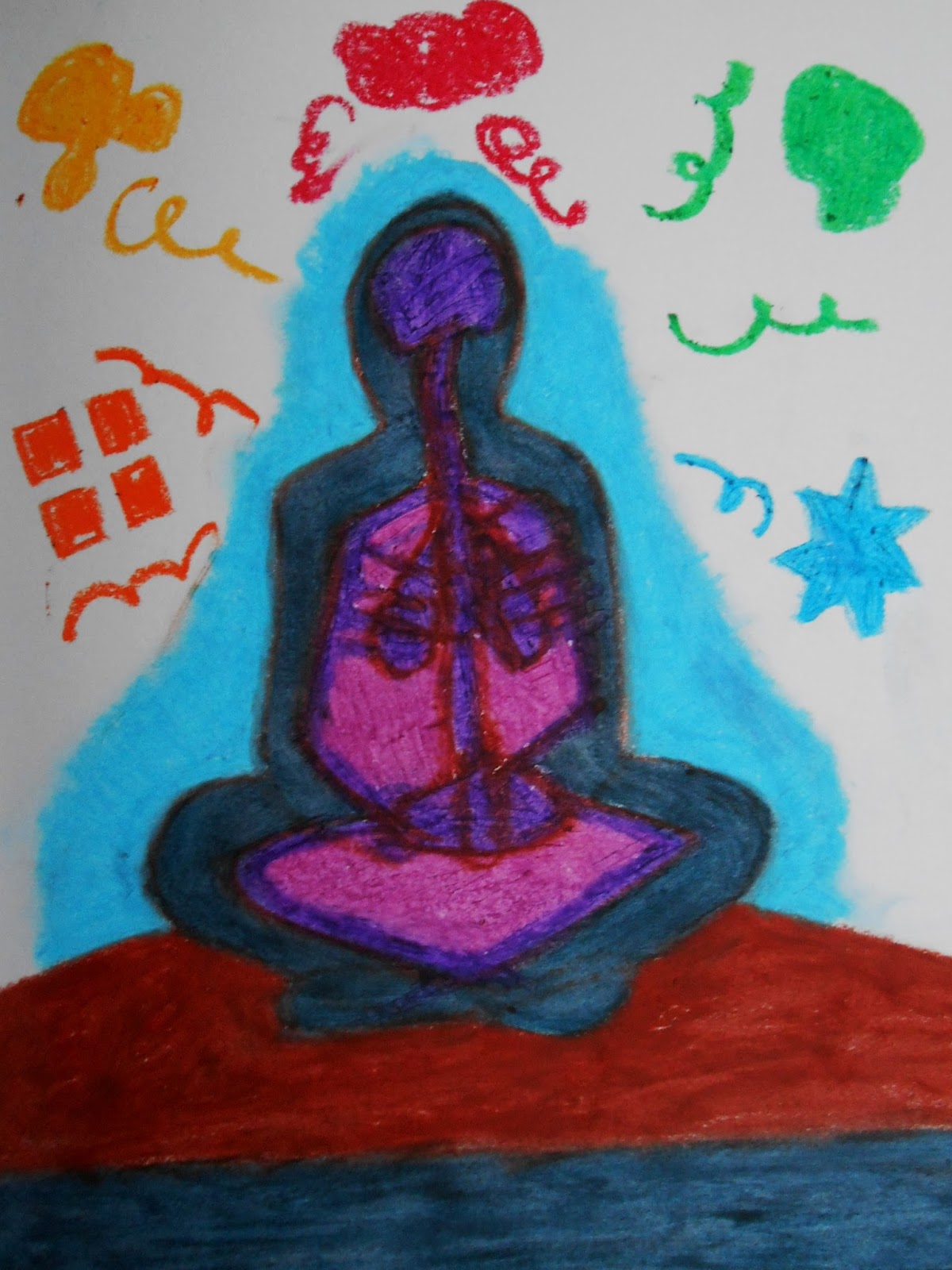reverse applique felt, embroidery (using rainbow thread) and button mandala
I first learnt Transcendental Meditation (TM) when I was fifteen, thanks to my friend Susan, who suggested we attend a talk one evening after school at the Adult Education Centre in Dartington, South Devon. We went on to learn TM, which involves the repetition of a mantra (or sound), and focusing on the mantra instead of thoughts, which leads to a deep level of relaxation, and change in brain wave patterns, quite quickly. We practised regularly for a while, but being teenagers, we didn't like the feeling of being monitored by the teachers after the class - to be fair, they were only being supportive, but I was very rebellious.
water soluble oil pastel Buddha face
I have just realised I have been doing TM incorrectly, after reading this article by Stuart Heritage, who points out that you are supposed to meditate twice a day for 20 minutes, whereas I have been doing it for 30 minutes once a day. So I am in a ten minute deficit, but no doubt some is a lot better than none.
I am also curious about the secrecy surrounding the mantra that Heritage refers to. The cynical part of me suspects this is a way of keeping the teachers as the experts, so new learners don't teach their friends - its a pretty simple technique. There was quite a ritual to the giving of the mantra, and it being specially chosen to suit our personality: however, when Susan and I eventually told each other our mantras (against instructions - but we were rebellious teenagers, what did they expect?) we realised we both had the same one, which was kind of deflating. Perhaps that is another reason for the secrecy...
appliqued new and vintage textile labyrinth meditation path
(which formed part of my social work frameworks presentation - social work is represented by the embroidered tablecloth)
The idea of the labyrinth as a walking meditation path is an ancient one and occurs in a variety of cultures including christianity. I became aware of the potential of the finger labyrinth as a meditation tool through one of my students, also an ACT afficionado, who conducted a pilot research project into using finger labyrinths.Basically the finger traces the path, which resembles a walking meditation path, but is obviously much smaller.
sitting meditation - pastels
Stephen then talked later about the Everyday Sublime, (he also said to be very wary of any nouns beginning with capital letters, but anyway). This equates to mindfulness in everyday life, and includes appreciative joy, but also suffering, which Buddhism is often concerned with. This all fits very neatly with ACT, which emphasises the human tendency towards'experiential avoidance', or how we try to avoid feeling anything we label bad, sad or mad.
The main point of Stephen's talk was the role of the arts and the artist in practicing the Four Noble Tasks (often called Truths, but he prefers Tasks, which is also very ACT-ish, as it emphasises action). The sublime is a term from aesthetics, which includes terrifying yet fascinating experiences and the emotions they evoke, as identified by the Romantic poets, for example. Stephen suggests the role of the artist is to articulate the everyday sublime, and this includes:
- Embracing Life
- Letting go of Reactivity
- Affirming Freedom from Reactivity and
- Cultivating this way of life,
All very interesting and I feel very inadequate in trying to relay the concepts, but I am hoping this will help me remember and understand, as much as anything. This is quite a long post, and now I am going out to dinner. It was my (our) wedding Uni-versary (we got married on Leap Year Day) this weekend.
Congratulations if you made it this far, which is also a good thought for an anniversary, albeit not a 'real' one.. embracing the everyday sublime, appreciating the joy, and the wisdom to know the difference, or something.
more later





2 comments:
Just lost a long comment on this. Hrmph! Anyway, good post Claire. I was hoping to attend on Friday too but wasn't able to.
hi Amanda
Sorry you lost your post, how frustrating! Also sorry you didn't make it on Friday, it would have been good to hear your thoughts on both counts. Have a good day, Claire
Post a Comment